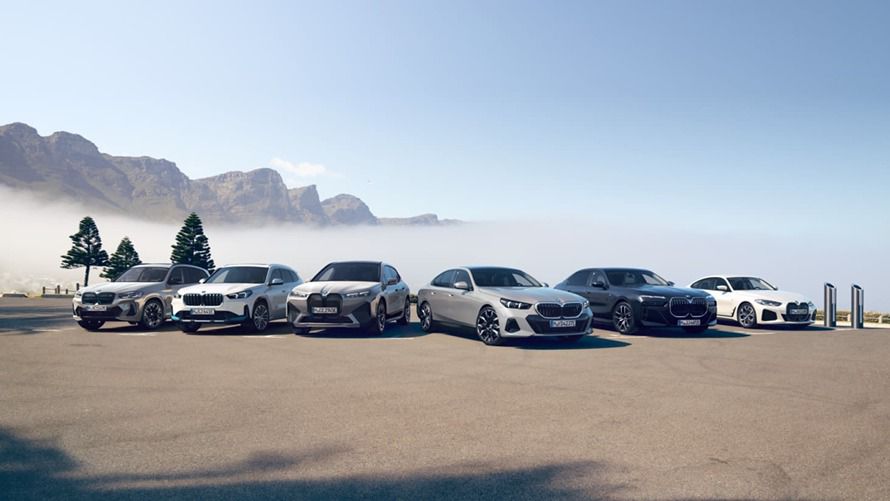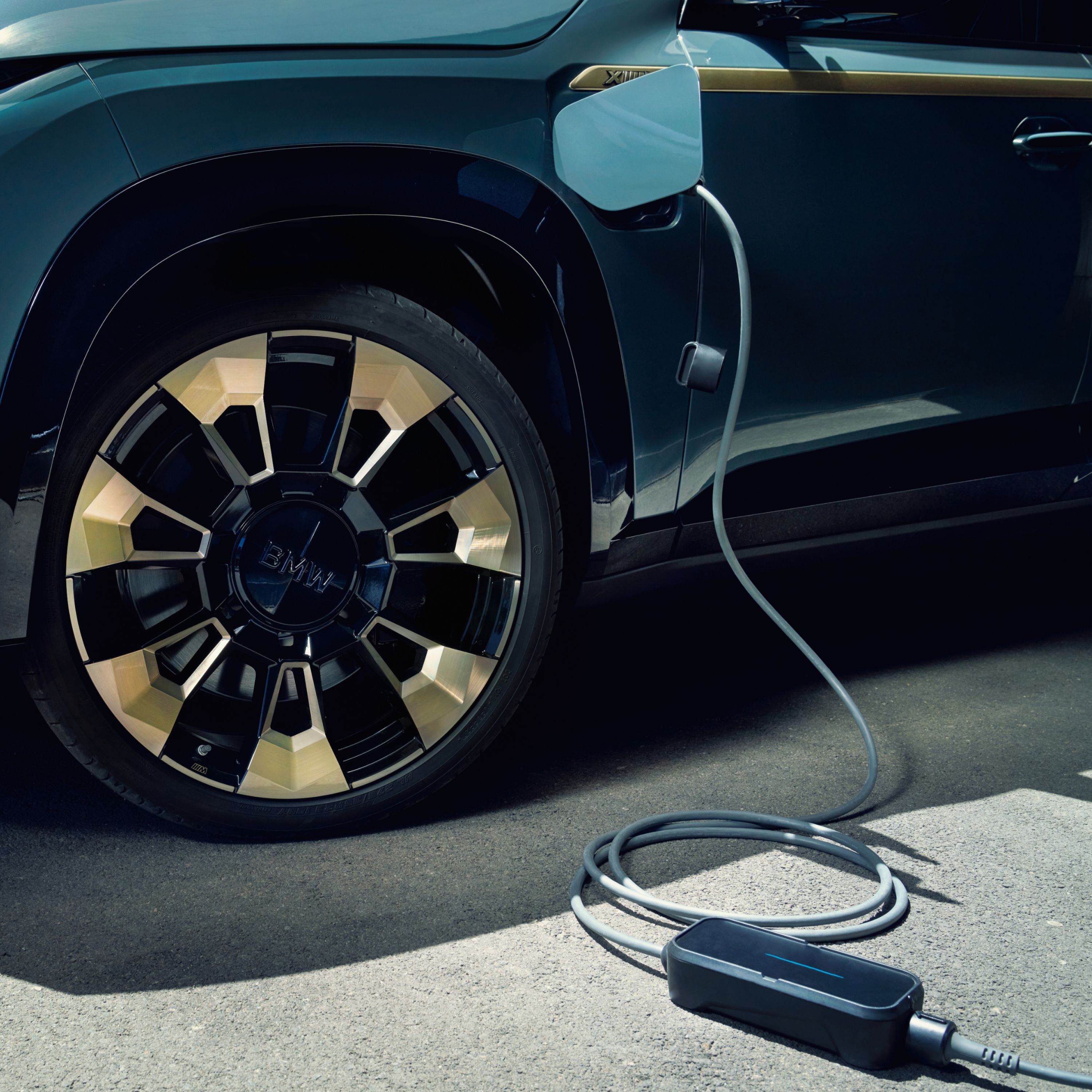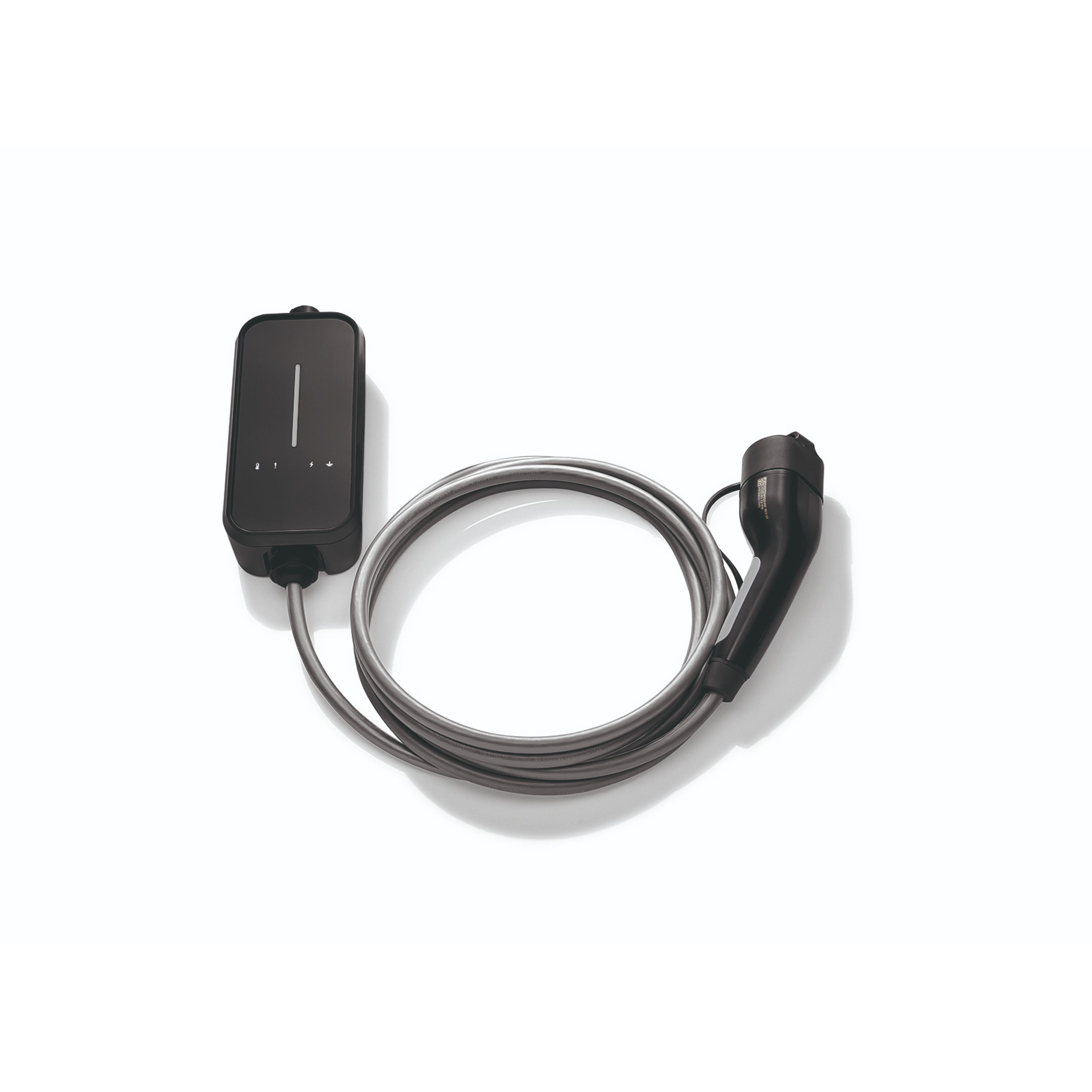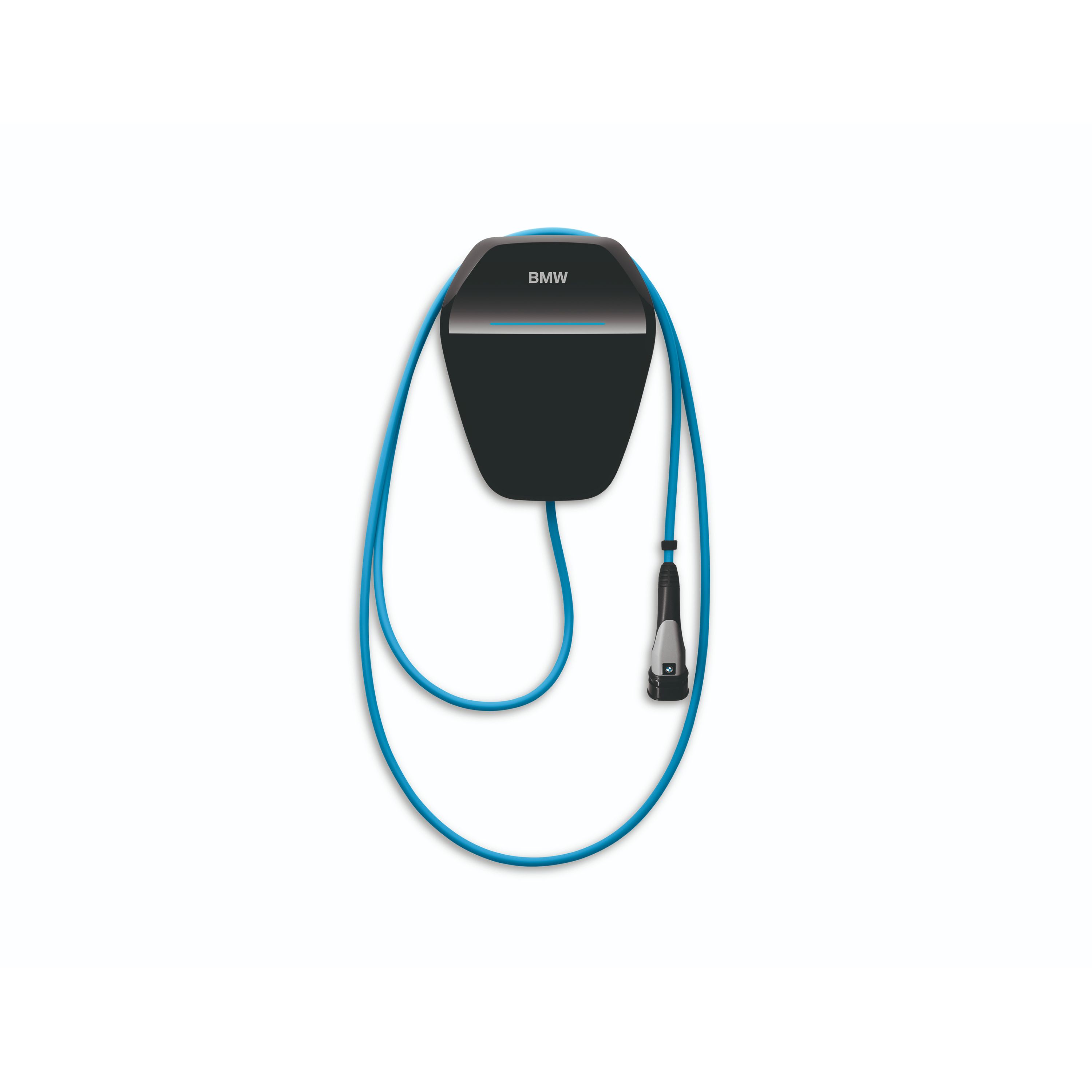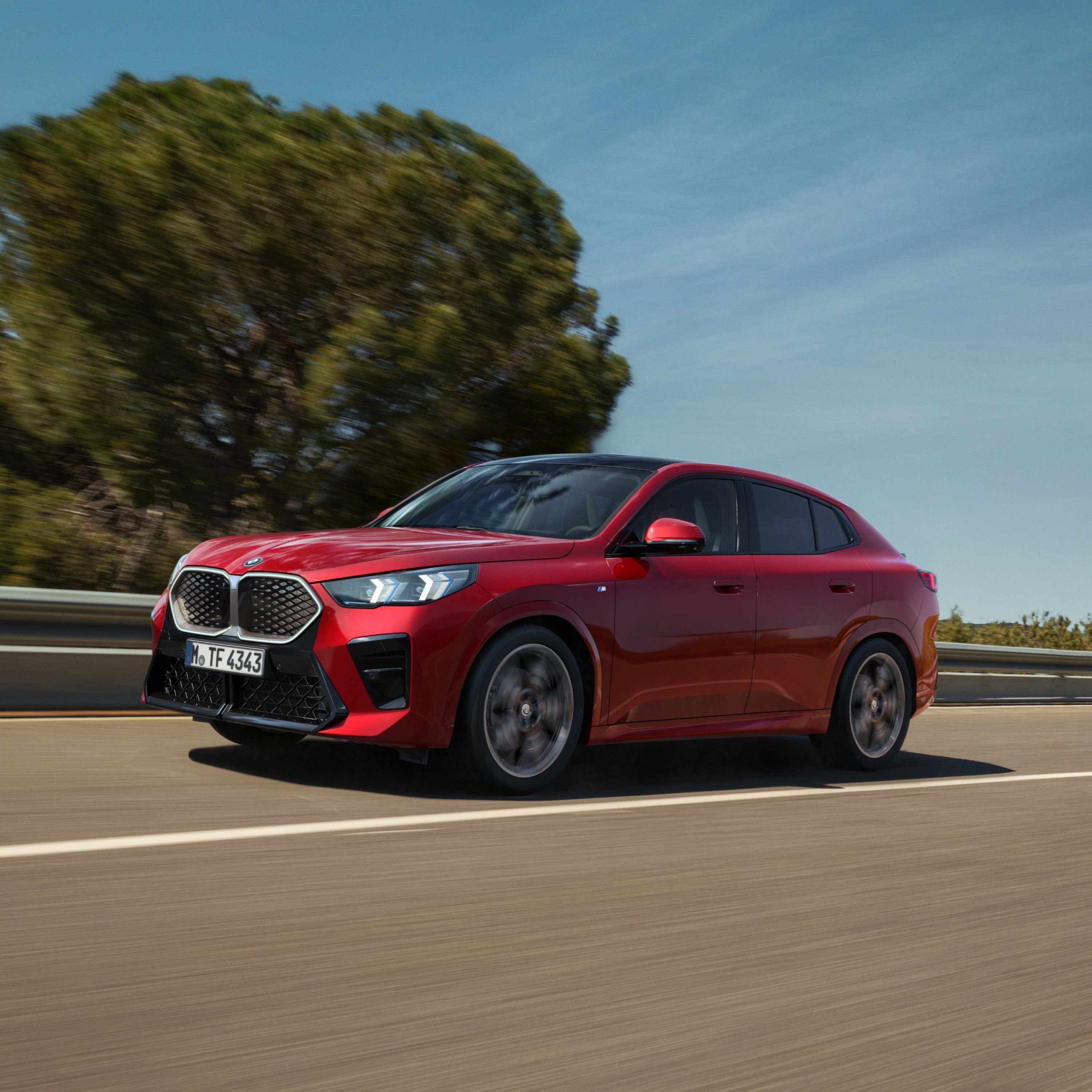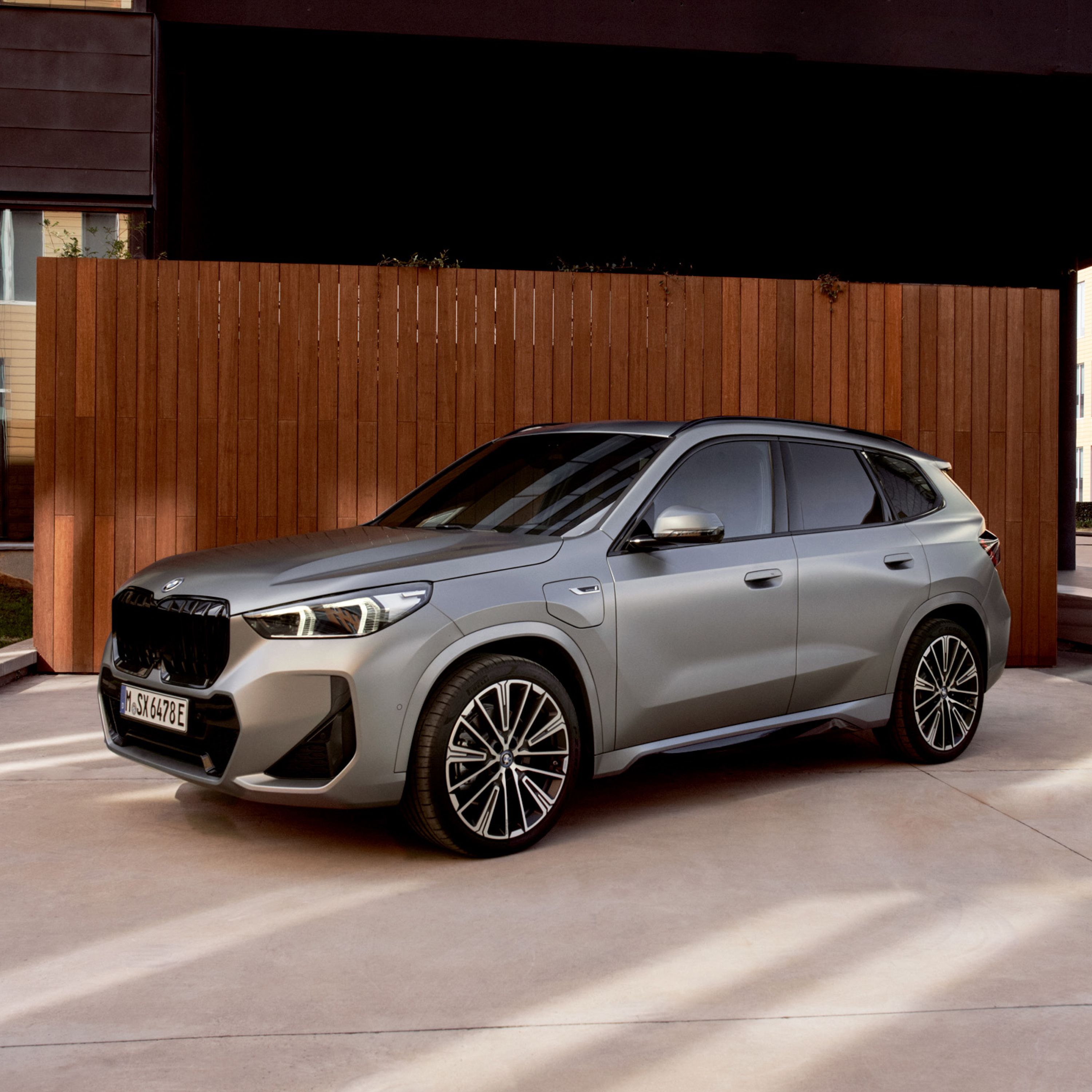BMW iX2 xDrive30e: Energy consumption, combined WLTP in kWh/100 km[1]: 17.8–16.3; Electric range, WLTP in km[2]: 417–449
THE BENEFITS
OF CHARGING AT HOME.

CHARGED OVERNIGHT.
Start your day with a full charge. Conveniently charge overnight with a charging station at home. As fast and easy as it goes.
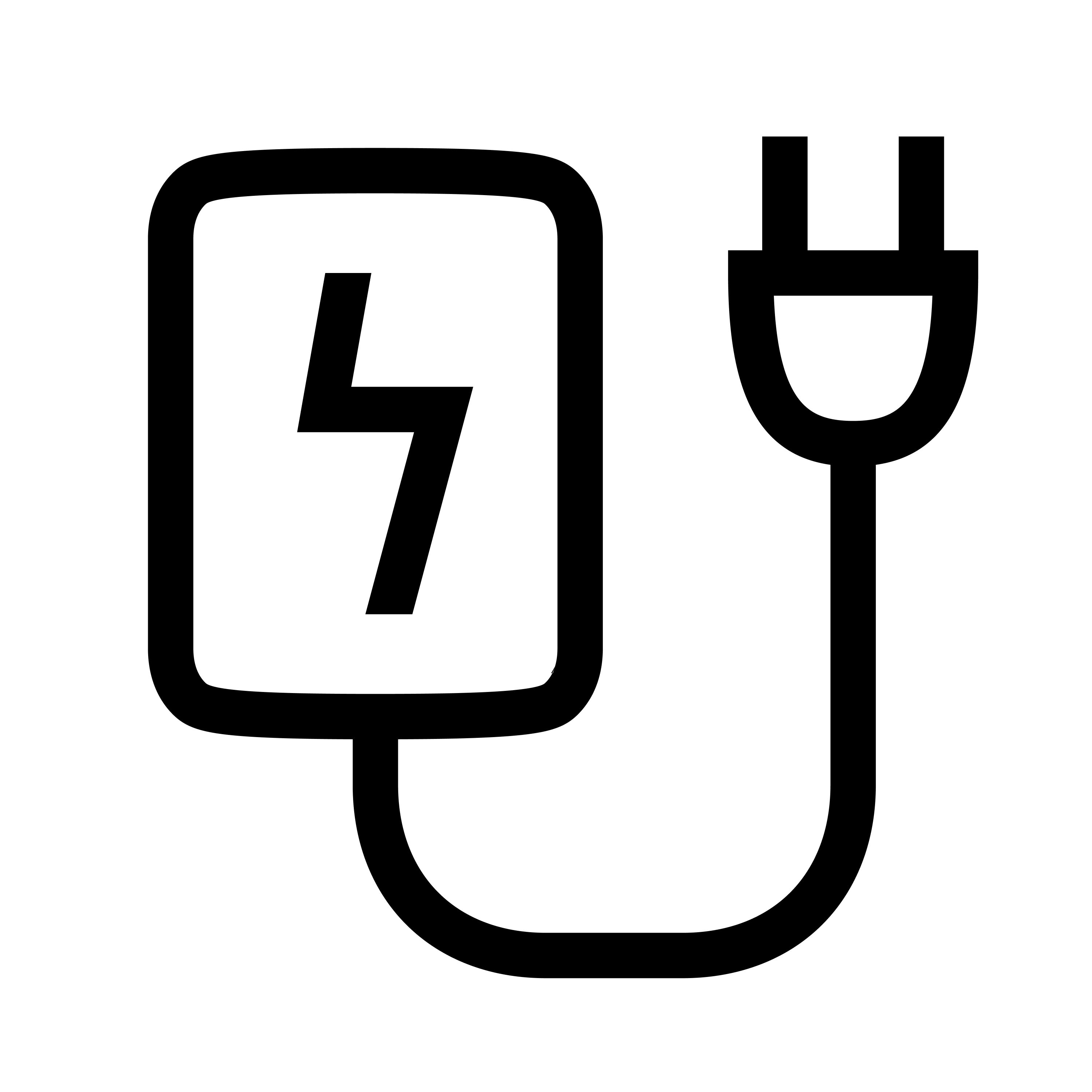
CONVENIENTLY CHARGE WITH A BMW BMW GEN 3 WALLBOX.
Charging doesn't get more convenient than this: your own wallbox at home. It's easy to operate with convenient cable management. And the benefit for you: just plug in the cable and start charging.

CHARGE SAFELY AND RELIABLY.
The BMW Wallbox and Flexible Fast Charger have been specifically designed for charging at home. Ultra-safely.
FAST AND CONVENIENT. CHARGING WITH A BMW WALLBOX PLUS.
BMW X3 eDrive30e: Fuel consumption, combined WLTP in l/100 km[1][3][4]: 2.6–2.0; CO2 emissions, combined WLTP in g/km[1][3][4]: 49–45 Energy consumption, combined WLTP in kWh/100 km[1][3][4]: 20.5–18.9; Electric range, WLTP in km[1][2][3]: 42–50
PLUG-IN-HYBRIDS AND ELECTRIC CARS
HOW TO CHARGE YOUR ELECTRIC CAR AT HOME.
Charge electric cars and plug-in hybrids based on their charging power. With up to 11 kW with the Flexible Fast Charger connected to a high-power socket, i.e. a CEE industrial socket, or with up to 22 kW quickly and safely at a BMW Wallbox. You can always charge your electric car at a domestic socket outlet. We recommend that you use the BMW Wallbox or the Flexible Fast Charger instead.
Find out more about the various home charging options for electric cars and plug-in hybrids.
CHARGING AT HOME
CHARGING SOLUTIONS FOR YOUR HOME.
INSTALLATION AND OPERATING INSTRUCTIONS.
6.3 M MWh
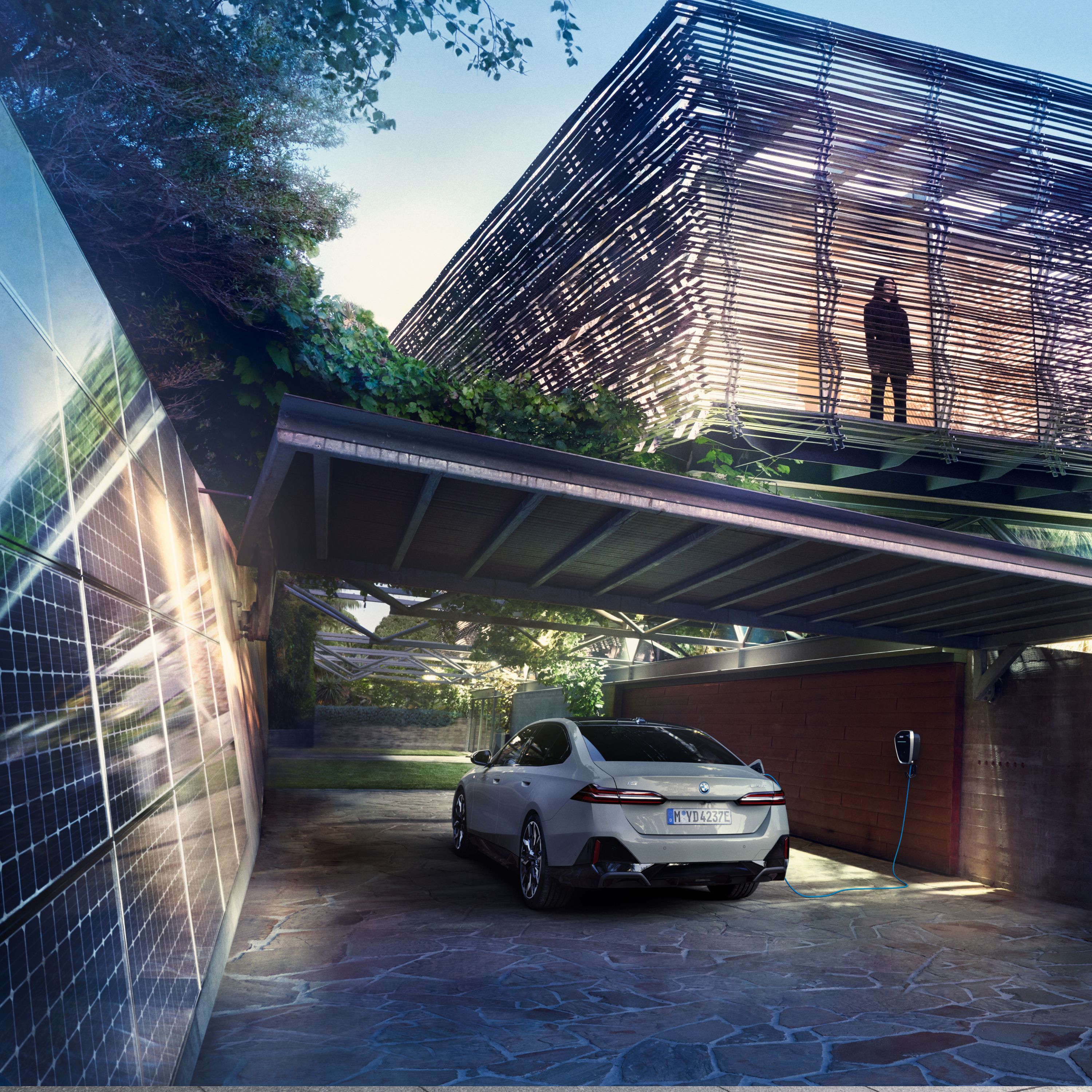
CONNECTED HOME CHARGING.
Connected Home Charging provides the complete package for charging your BMW at home. The package includes the BMW Wallbox Plus, as well as practical additional features in the My BMW app to optimise charging, plus expert installation at your home. It includes everything you need to make charging at home as simple as possible.
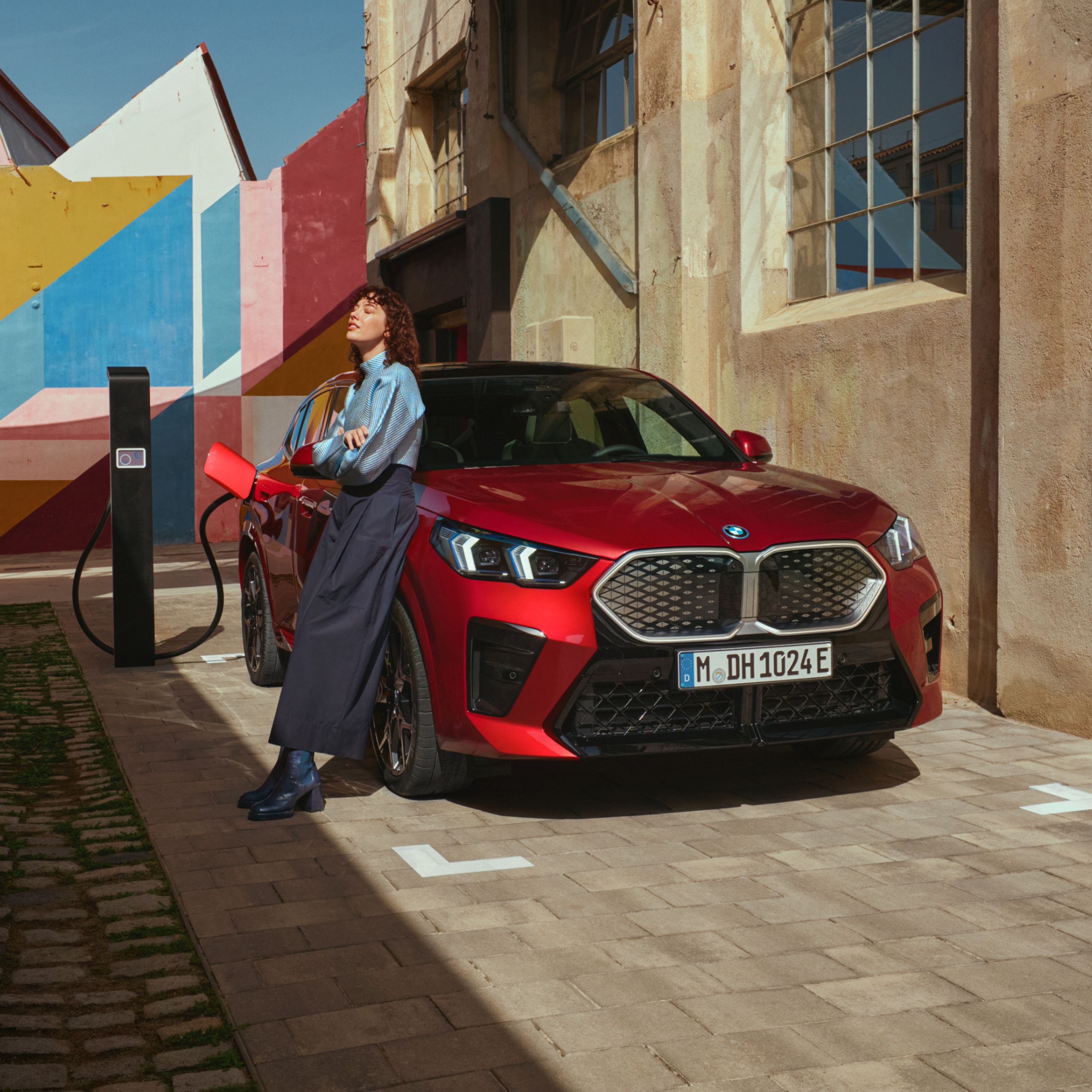
ALTERNATIVELY, CHARGE ON THE GO.
Peace of mind on the move. Public charging stations are a good alternative to charging at home. Now widely available, they offer different levels of charging power. Discover the large BMW Charging network. Over 300+ charging stations across New Zealand. Get to your destination stress-free with routes optimised for charging. Simply use the navigation system or the My BMW app to find your nearest charging stations.
ALL ABOUT ELECTROMOBILITY.
Range Overview
ELECTRIC CAR PRICE COMPARISON.

BMW i4 eDrive40 Gran Coupé[6]: Energy consumption, combined WLTP in kWh/100 km[1]: 19.1–16.1
BMW i7 xDrive60 Sedan: Energy consumption, combined WLTP in kWh/100 km[1]: 19.6–18.5

BMW iX1 eDrive20: Energy consumption, combined WLTP in kWh/100 km[1]: 17.2–15.4
BMW iX2 xDrive30: Energy consumption, combined WLTP in kWh/100 km[1]: 17.8–16.3
BMW iX3: Energy consumption, combined WLTP in kWh/100 km[1]: 18.0–17.6
BMW iX xDrive40: Energy consumption, combined WLTP in kWh/100 km[1]: 21.4–19.4
FREQUENTLY ASKED QUESTIONS.
MORE INFORMATION.

TEST DRIVE THE BMW MODEL
OF YOUR CHOICE.
Would you like to experience for yourself how your ideal electric model drives and feels? Simply arrange an online appointment for a test drive when it suits you. Your local BMW partner will contact you with all the information you need.
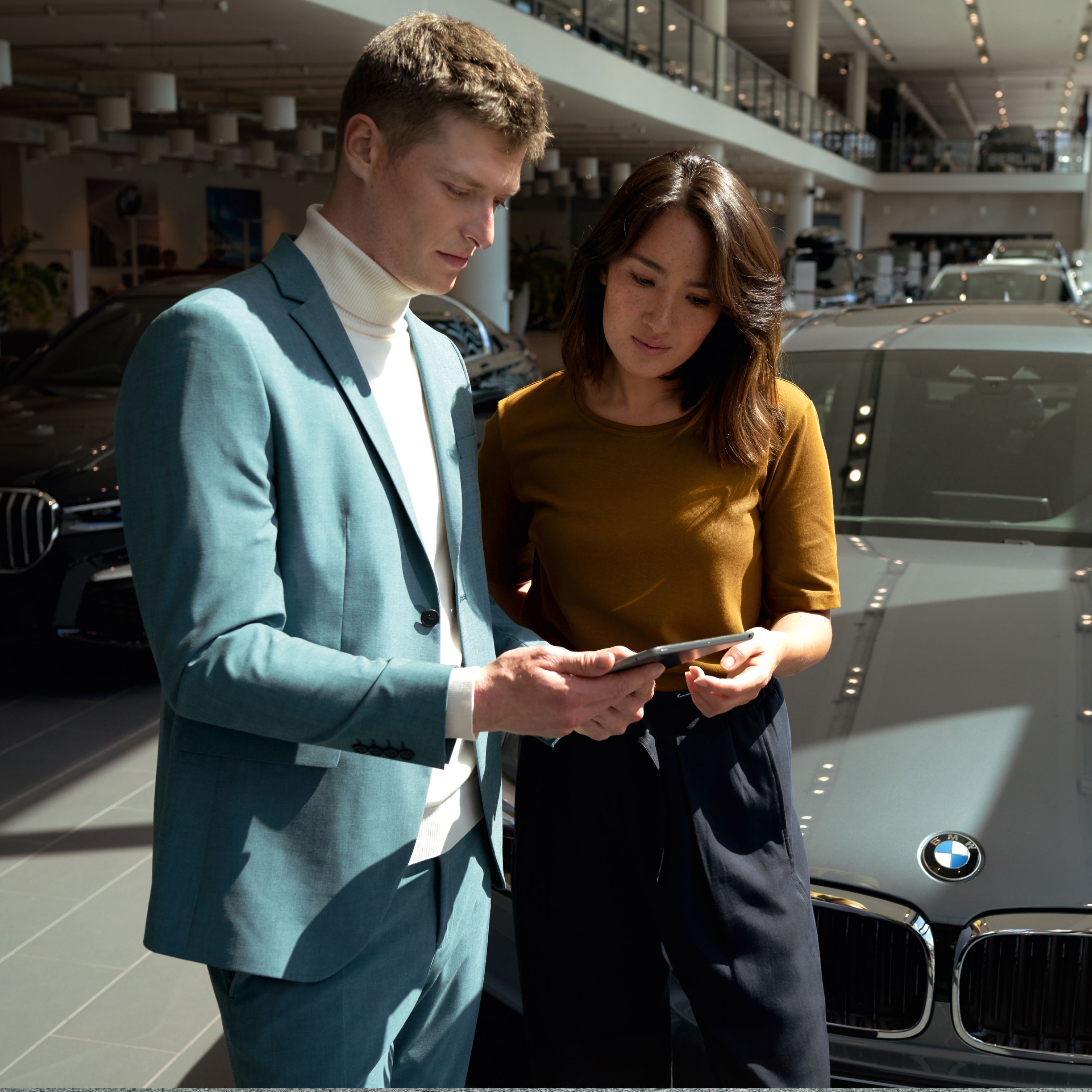
WOULD YOU LIKE A PERSONAL CONSULTATION?
Please contact your local BMW dealership with any questions or for more information or a quotation. Our professional BMW service personnel will be happy to advise you by phone or in person.

BMW CUSTOMER SUPPORT.
BMW Customer Support is on hand to help you with all BMW-related issues – so that you get answers to all your questions: whether you're an existing BMW driver or are planning to purchase a new BMW.
Fuel consumption and CO2 emissions.
BMW iX2 xDrive30e: Energy consumption, combined WLTP in kWh/100 km[1]: 17.8–16.3; Electric range, WLTP in km[2]: 417–449
The values of fuel consumptions, CO2 emissions and energy consumptions shown were determined according to the European Regulation (EC) 715/2007 in the version applicable at the time of type approval. The figures refer to a vehicle with basic configuration in Germany and the range shown considers optional equipment and the different size of wheels and tires available on the selected model.
The CO2 efficiency specifications are determined according to Directive 1999/94/EC and the European Regulation in its current version applicable. The values shown are based on the fuel consumption, CO2 values and energy consumptions according to the NEDC cycle for the classification.
When charging times are shown they can be affected by a number of factors such as type of charger, voltage supplied to the charger/car and type of current (AC or DC) supplied to the charger/car. The car also plays a role in charging times as it can be set by the driver to accept various different amperage and should preconditioning be used to heat or cool the vehicle while charging this will also affect the charging time.
The basis for the calculation of the charging times for 100 km range is the electric consumption of the vehicle based on the use of a high-Powered Charging station (HPC) or charging type and current as indicted in the literature above. The testing procedure measures are based on a 23 degrees Celsius battery start and ambient temperature with certification values excluding additional auxiliary consuming devices and systems within the vehicle such as seat heating, displays, air conditioning.
Individual consumption (fuel economy) may differ due to driving profile, vehicle load profile, auxiliary consumer usage, temperature, and ambient conditions. Consumption is based on WLTP or NEDC (whichever is indicated) best case conditions and is independently tested for BMW Group. If you are comparing this range with other models or brands make sure they are stating the same WLTP or NEDC testing regime. These results can be used to compare vehicles on a close to “like for like” basis but are unlikely to be achieved in real world conditions for reasons including temperature variation, driving conditions and the use of the auxiliary systems referred to above.
Information provided and images displayed on this site include overseas models and may show some features not available in New Zealand. Please contact an authorised BMW dealer for specific information on vehicles and features available in New Zealand. Product changes may have been made since production of this content.
[1] Official data for fuel consumption, CO2 emissions, power consumption and electric range was determined in accordance with the prescribed measuring procedure and corresponds to European Regulation (EC) 715/2007 in the applicable version. For ranges, data determined as per WLTP takes into account any optional equipment (available on the German market in this case). For vehicles that have been newly type approved since 1 January 2021, only the official data according to WLTP exists. In addition, NEDC values are deleted from the certificates of conformity as of 1 January 2023 by EC regulation 2022/195. For more information about NEDC and WLTP measuring procedures visit www.bmw.com/wltp
Further information about fuel consumption and official model-specific CO2 emissions of new passenger cars can be found in the "Guideline for fuel consumption, CO2 emissions and electric power consumption for new passenger cars", available free of charge at all points of sale, at the Deutsche Automobil Treuhand GmbH (DAT), Hellmuth-Hirth-Str. 1, 73760 Ostfildern-Scharnhausen, Germany, and under https://www.dat.de/co2/.
[2] Range depends on various factors, in particular: individual driving style, route characteristics, outside temperature, heating/air conditioning, pre-conditioning.
[3] Performance data of petrol engines apply to vehicles using RON 98 fuel. Fuel consumption data apply to vehicles using reference fuels in accordance with EU Regulation 715/2007. Unleaded RON 91 and higher with a maximum ethanol content of 10% (E10) may also be used. BMW recommends RON 95 fuel. For high-performance automobiles, BMW recommends RON 98 fuel.
[4] For plug-in hybrid: Weighted, combined (EC AC Charge Weighted)
[5] The charging performance depends on the state of charge, ambient temperature, individual driving profile and use of auxiliary consumers. The ranges shown are based on the WLTP best case. The charging times apply to ambient temperatures of 23 degrees Celsius after a preceding drive and may differ depending on the usage behaviour.
[6] Provisional figures; any missing figures were unavailable at the time of publication.
